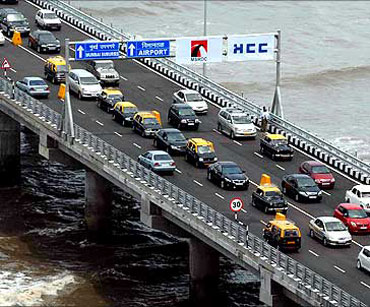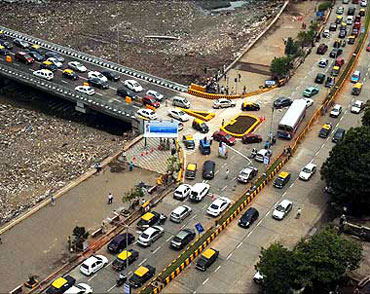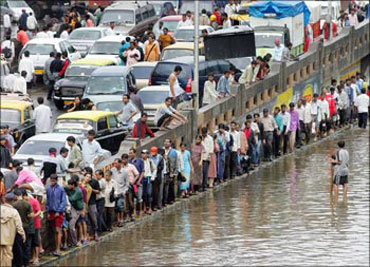
Audit firm PricewaterhouseCoopers has suggested that India should go in for more toll roads and impose a congestion fee to raise resources to meet its huge demand for infrastructure spending.
". . . strong regulatory measures, such as toll roads or congestion charges, will compliment the increased requirement of investment in transport infrastructure," PWC's report -- 'Transportation and Logistics 2030' -- said. It, however, said that India and other emerging markets would not be able to bridge the gaps in infrastructure by 2030, even after spending heavily in transport and logistics.
The report also suggests that population density is a key indicator for the assessment of future needs for public transport infrastructure development.
India stands out as a country, which will need extensive infrastructure enhancements, given that its already-high population density will increase further by 22% by 2030. Estimates suggest that India will be home to a whopping 452 people per square kilometre.
Click NEXT to read on. . .

Financing the maintenance of transport infrastructure, managing urban congestion, supply chain disruption on account poor rural connectivity, loading of environmental costs as an integral project cost would be few of the challenges that global transport infrastructure industry will be facing in the next 20 years, the report said.
India is no exception, since half of the increase in global trade in goods and services will come from the BRIC economies. While the country may be able to offer cost advantages due to lower labour or production costs, these effects could easily be offset by higher transport costs resulting from inadequate transport infrastructure.
Although emerging markets, such as India and Russia, currently heavily invest in transport infrastructure, they will not be able to close the gap completely by 2030.
Stressing that India needs to take aggressive infrastructure spending on the pattern of China, it pointed out that even after this, it would not be able to keep pace with industrialised nations while China may overtake them.
Click NEXT to read on. . .

"Massive investment in transport infrastructure will not be sufficient to close all infrastructural bottlenecks by 2030," it said.
The report suggested that as true of its global peers India too would face constraints in allocating sufficient capital to transport infrastructure.
"Moreover, the government would not be able to completely shift transport infrastructure investments to private sector through means such as PPP. Also, financing the maintenance of existing infrastructure will be more difficult than attracting investment in new infrastructure," it said.
Click NEXT to read on. . .

The report comes at a time when the Planning Commission has expressed confidence that investment in the infrastructure sector during the 11th Plan (2007-12) would be close to the target of $500 billion, with private sector contributing about 40 per cent of the amount.
The investment target for the infrastructure sector in the 12th Plan (2012-17) is likely to be fixed at $1 trillion, with private sector contributing about 50 per cent of the total estimated outlay.
"Traditional government businesses in the transportation and infrastructure sector will in the long-term be managed by private players and government will act as a regulator," said India leader for Transportation and Infrastructure practice for PWC Amrit Pandurangi.
Click NEXT to read on. . .

The present lackadaisical quality of transport services would transform into a value added and high-tech experience which will, however, come at a price, he said.
The PWC and Supply Chain Management Institute report was based on a survey among 104 experts from 29 countries.
The study employed a technique called real-time Delphi sector expert survey. Respondents to the Delphi survey of 104 experts in 29 countries predict that industrialised countries would maintain their leadership position in transport and logistics infrastructure provision over the countries like India even by 2030.